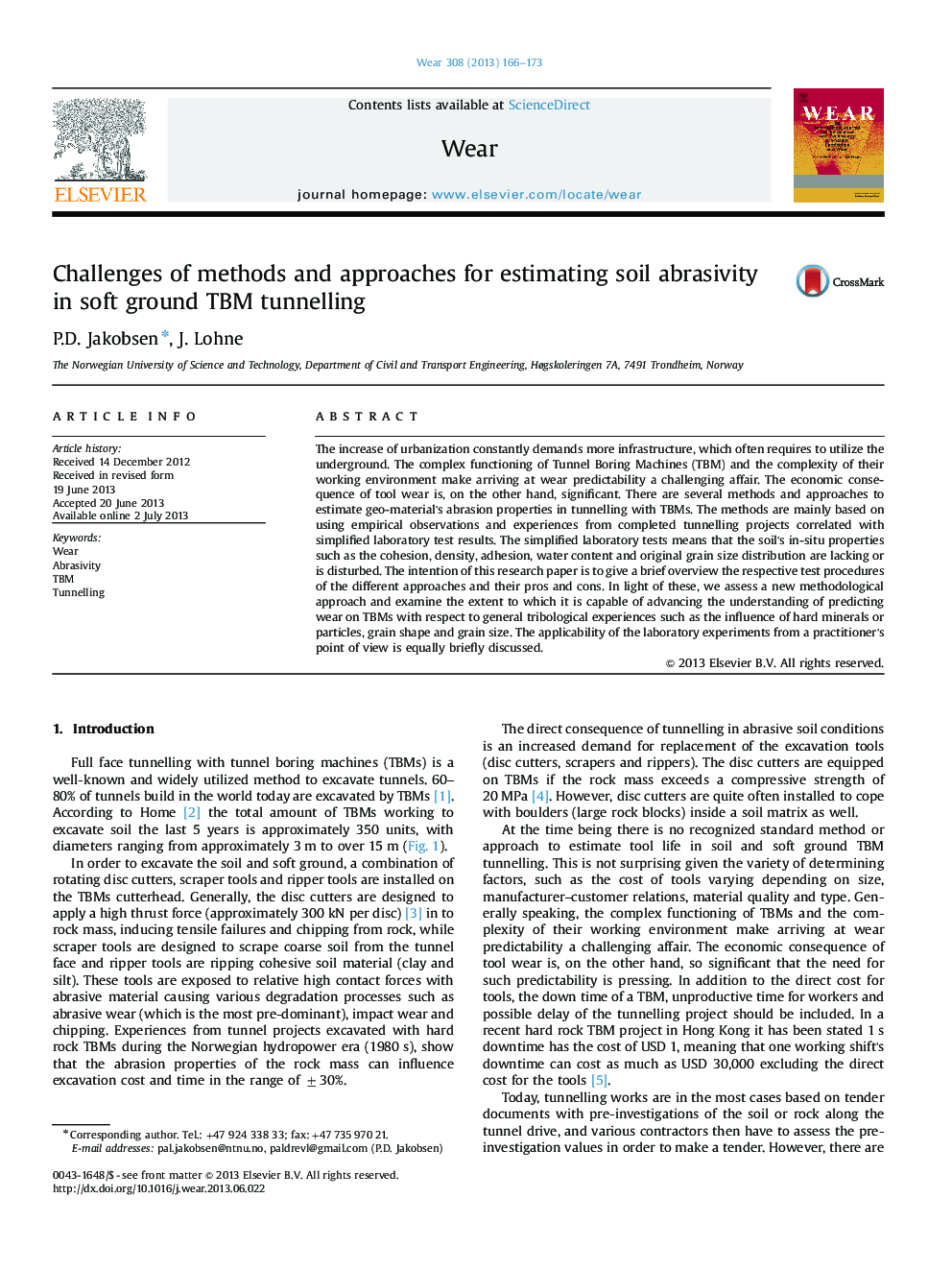| Article ID | Journal | Published Year | Pages | File Type |
|---|---|---|---|---|
| 617443 | Wear | 2013 | 8 Pages |
Abstract
The increase of urbanization constantly demands more infrastructure, which often requires to utilize the underground. The complex functioning of Tunnel Boring Machines (TBM) and the complexity of their working environment make arriving at wear predictability a challenging affair. The economic consequence of tool wear is, on the other hand, significant. There are several methods and approaches to estimate geo-material's abrasion properties in tunnelling with TBMs. The methods are mainly based on using empirical observations and experiences from completed tunnelling projects correlated with simplified laboratory test results. The simplified laboratory tests means that the soil's in-situ properties such as the cohesion, density, adhesion, water content and original grain size distribution are lacking or is disturbed. The intention of this research paper is to give a brief overview the respective test procedures of the different approaches and their pros and cons. In light of these, we assess a new methodological approach and examine the extent to which it is capable of advancing the understanding of predicting wear on TBMs with respect to general tribological experiences such as the influence of hard minerals or particles, grain shape and grain size. The applicability of the laboratory experiments from a practitioner's point of view is equally briefly discussed.
Keywords
Related Topics
Physical Sciences and Engineering
Chemical Engineering
Colloid and Surface Chemistry
Authors
P.D. Jakobsen, J. Lohne,
